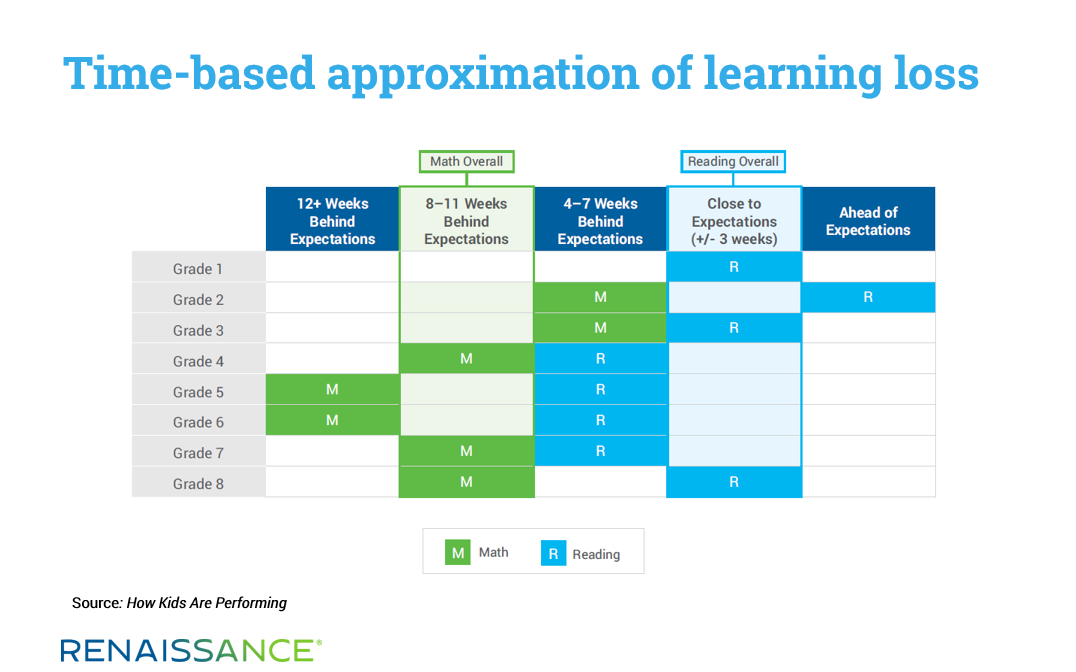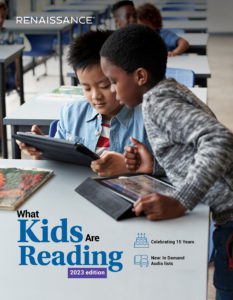December 11, 2020
With learning models shifting—in some cases, multiple times—this school year, educators have shown us just how resilient (in fact, superheroic) they really are. But these shifts haven’t been without challenges, especially when it comes to gathering student data to inform daily instruction.
In the classroom, you can often engage in informal assessment through direct observation: you can generally tell whether students are “getting it” or require additional instruction. Teaching remotely or in a hybrid model adds a layer of complexity here: How can you know when students are ready to move on and what they’re ready to learn next?
We understand how critical it is to have a complete picture of student performance to support teaching and learning. Many of you are leaning more on formative and benchmarking tools like Star Assessments this year to guide instruction and practice and to address the “COVID Slide.” Our latest product enhancements will help you make sense of the various data points you’re collecting so you can take action to accelerate growth—regardless of how you’re engaging with your students.
You’ll find a summary of the recent enhancements below. For full details, please visit our new Product Updates Blog.
Using Growth Proficiency to plan instruction
To assist you in planning the best instructional path forward for each student, we’ve added a new Growth Proficiency Category column to the Star Growth Report for assessments administered in English and Spanish. This newly added information provides a quick indicator of a student’s level of growth, based on their Student Growth Percentile (SGP) score, and the student’s proficiency, based on their Percentile Rank (PR) score related to a particular benchmark.
This allows you to quickly determine which of four categories a student belongs to: High Growth, High Proficiency; High Growth, Low Proficiency; Low Growth, High Proficiency; or Low Growth, Low Proficiency. With this additional insight into how students are progressing over time, you’ll get a more well-rounded picture of each student’s performance.

Learn more: Read the post on the Product Updates Blog. Watch the webinar for insights on using the Growth Proficiency metric to plan daily instruction.
Moving students toward Spanish proficiency
For our Texas educators, we recently completed a statistical linking study to help you predict whether individual students are on track for success on the STAAR Spanish assessment. With summative testing canceled last spring due to COVID-19 building closures, this information is especially useful now, as you look for ways to meaningfully assess where students are so you can reallocate resources where they’re needed the most.
Learn more: Access the new linking study between Star Reading and Star Math in Spanish and STAAR Spanish. Read the post on the Product Updates Blog for three steps for making use of this new feature.
Identifying Focus Skills in Spanish
We know that teachers are often tasked with covering more skills than is realistically possible, and that essential skills are generally co-mingled with non-essential skills. Renaissance Focus Skills show you what is essential at each grade level, involving concepts that students must master in order to advance to the next step in reading and mathematics.
Just like the English versions of Star, the Spanish versions include learning progressions that are empirically validated, aligned to state standards, and pinpoint the skills students are ready to work on next. The Spanish learning progressions now identify Focus Skills (Destrezas Esenciales) as well. For K–12 students taking Star Assessments in Spanish, educators will not only see the skills students are ready to work on based on their Star scaled score, but they will also be able to quickly identify Focus Skills, included on the Star Instructional Planning Reports, to move every student to greater mastery.

Learn more: Read the post on the Product Updates Blog. Explore our new learning progression for Spanish reading. Watch the webinar for insights on assessing students in Spanish and English with Star.
Measuring elementary students’ development in a new way
We recently released Star CBM assessments for K–6 students in reading and K–3 students in math, to complement our Star adaptive assessments. Being able to screen and progress monitor students through one-on-one measures empowers you to better target instruction and intervention to the specific needs of your younger learners. The new Star CBM software supports both in-person and remote assessments. Star CBM Reading also includes Rapid Automatic Naming (RAN) measures that can assist in screening for characteristics of dyslexia, as required by many states.
Learn more: Read the post on the Product Updates Blog. Watch the “Meet Star CBM” overview video. See how Star CBM supports students in distance-learning environments.
Getting deeper insights into your Star data
After completing fall screening, how do you quickly review and make sense of all your Star data? Hopefully, you’ve taken advantage of the new district-level dashboards powered by Schoolzilla to gain insights on how students performed in Star Reading, Star Math, and Star Early Literacy (including those assessments taken in Spanish). In addition, we recently enhanced our dashboard capabilities so you can now look at mastery of specific standards by particular student groups to answer questions like: Are there differences in mastery of a particular standard for students of different races/ethnicities?
Learn more: Read the post on the Product Updates Blog. Get an expert’s tips for setting equitable goals this school year.
Bringing it all together
You’ve analyzed the data—so what’s next? The power of these insights can drive important decisions for accelerating your students’ growth. Renaissance is committed to ensuring continuous learning, and we are behind you every step of the way—from assessment to daily practice to data visualizations. Take a look at how a school in Pennsylvania is using data-informed instruction to connect the dots and drive more growth for students.
Understanding how kids are performing
As part of our mission to accelerate learning for all, we undertook a research analysis of the true impact of the “COVID Slide”. Based on more than 5.3 million Star tests administered this fall, the new How Kids Are Performing report shows you the extent of student learning loss in both reading and math. It also translates these losses into instructional terms—so you can see which subject areas and grade levels have been impacted the most.

Get strategies for using the new report to guide reading and math instruction in your school. Explore the true—and critical—role of educational data this school year.
Learn more
Stay informed on the latest enhancements to your Renaissance products. Bookmark the Product Updates Blog and check back often for new information and resources.

